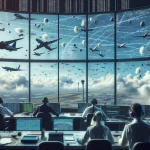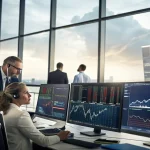President Donald Trump threatened to impose an additional 100% tax on imports from China as soon as November 1, a move that could reignite trade tensions and rattle financial markets. The announcement signals a steep escalation in import costs at a scale that in April stirred fears of a recession. The threat raises new questions for businesses, consumers, and policymakers tracking inflation and supply chains.
“[He] threatened to place an additional 100% tax on Chinese imports starting on Nov. 1 or sooner, potentially escalating tariff rates close to levels that in April fanned fears of a recession.”
Economic Stakes and Inflation Risks
Doubling the effective tax on Chinese goods would lift prices on a wide range of products, from electronics and apparel to machinery parts. Importers typically pay the tariff upfront and then pass part or all of the cost along the supply chain. That can raise consumer prices and compress margins for retailers and manufacturers.
Economists caution that higher import taxes can add to inflation, especially when applied quickly and broadly. If companies cannot easily switch suppliers, inflation pressures can persist for months. In April, a smaller increase in trade barriers was enough to spark concern about a slowdown as markets weighed higher costs against cooling demand.
Financial markets often react to tariff threats with brief risk-off moves, including weaker equities and firmer safe-haven assets, as investors price in lower profitability and slower trade. Currency markets can also shift if participants expect reduced cross-border flows.
Policy Context and Recent History
The United States and China have cycled through tariff escalations and temporary truces over the past several years. Businesses learned to reroute some sourcing, but many sectors remain tied to Chinese components and finished goods. Each new round of duties complicates planning and inventory decisions, especially near the holiday season.
In previous cycles, some firms absorbed costs to keep customers, while others raised sticker prices. Over time, that mix can weigh on investment, hiring, and productivity. The April flare-up reminded executives how quickly trade policy can shift and how sensitive growth expectations can be to sudden changes.
Industry and Consumer Impact
Retailers, automakers, and electronics firms face the most immediate exposure because of their reliance on Chinese inputs. Small and medium-sized businesses, which have less pricing power and fewer supplier options, could be squeezed hardest.
- Consumers may see higher prices for popular goods before the holiday period.
- Manufacturers could confront increased costs for parts and equipment.
- Exporters may face retaliatory measures that reduce overseas sales.
Some trade groups argue that blanket tariffs function as a broad tax on the domestic economy, not just on foreign producers. They warn that sudden increases reduce predictability and prompt firms to delay investment. Others support aggressive measures, saying pressure on Beijing is necessary to address concerns on technology transfers, industrial subsidies, and market access.
What Experts Are Watching
Analysts will monitor whether the threat becomes policy by November 1, whether exemptions are offered, and how enforcement is structured. They will also track any response from Chinese authorities. Past episodes have included counter-tariffs on U.S. agriculture, energy, and manufactured goods.
Forecasters say the scale and scope of the measure will determine the impact. A full 100% add-on across broad categories would be more disruptive than targeted increases. Timing matters as well; importers with shipments already en route may face abrupt cost jumps upon arrival.
Economists also point to second-order effects. If firms move supply chains again, they may shift orders to countries with limited capacity, producing bottlenecks and delivery delays. That could amplify price spikes even if the overall economy remains steady.
Signals for Investors and Policymakers
Investors will weigh short-term inflation risks against potential demand slowdown from higher prices. Policymakers will measure any fresh tariff shock against inflation targets and growth goals. If trade friction intensifies, central banks could face a harder trade-off between price stability and employment.
For now, the threat alone is enough to spur contingency plans. Companies are reviewing contracts, exploring alternate suppliers, and preparing price adjustments, even as they wait for final details.
The coming weeks will reveal whether the proposal takes effect, narrows to specific sectors, or becomes part of a negotiated pause. The stakes are high: another tariff surge could lift prices, unsettle markets, and test the resilience of supply chains. Readers should watch for any official notice, a timeline for implementation, possible carve-outs, and signs of countermeasures from Beijing.







